In an era where climate change is a pressing global issue, the importance of sustainability has transcended the realm of personal choices to become a fundamental business imperative. From general contractors and architects to interior designers and manufacturers, every professional involved in shaping spaces plays a pivotal role in steering the industry toward building a more sustainable home design, and should I say regenerative design and business models, to create a sustainable home design for our well-being and that of the planet. This article explores the significance of running a sustainable business and practice in the home environment, supported by compelling statistics. We will delve into the amount of time spent indoors, the positive impact of biophilic design on our health, the non-negotiable need for sustainability, and how adopting sustainable practices can increase profits while maintaining cost efficiency.
Table of Contents.
1: The Time We Spend Indoors
Our modern lives have evolved in such a way that we spend a significant portion of our time indoors. This shift is exemplified by data that reveals the average American spends approximately 90% of their life indoors, whether at home, in the office, or in other indoor spaces. This staggering statistic underscores the immense importance of ensuring the indoor environment is healthy, comfortable, and sustainable.
2: The Healing Power of Biophilic Design
Biophilic design, a concept that integrates natural elements and patterns into the built environment, has garnered increasing attention for its profound impact on human well-being. Studies have shown that exposure to natural elements within indoor spaces can reduce stress, improve productivity, and enhance overall mental and physical health. A report by the World Green Building Council indicates that incorporating biophilic design can lead to an 11% increase in productivity and a 47% decrease in fatigue among employees, emphasizing its positive effects.
3: A Sustainable Home Design: No Longer a Choice
In the context of an increasingly fragile environment, sustainability is no longer an option; it is a necessity. The built environment is responsible for a significant portion of global greenhouse gas emissions, and the construction and operation of buildings consume vast amounts of resources. Data from the United Nations reveals that buildings are responsible for 34% of global energy demand and 37% of energy-related carbon dioxide emissions. It is evident that inaction in the face of climate change is no longer an option, we need to keep creating sustainable home design
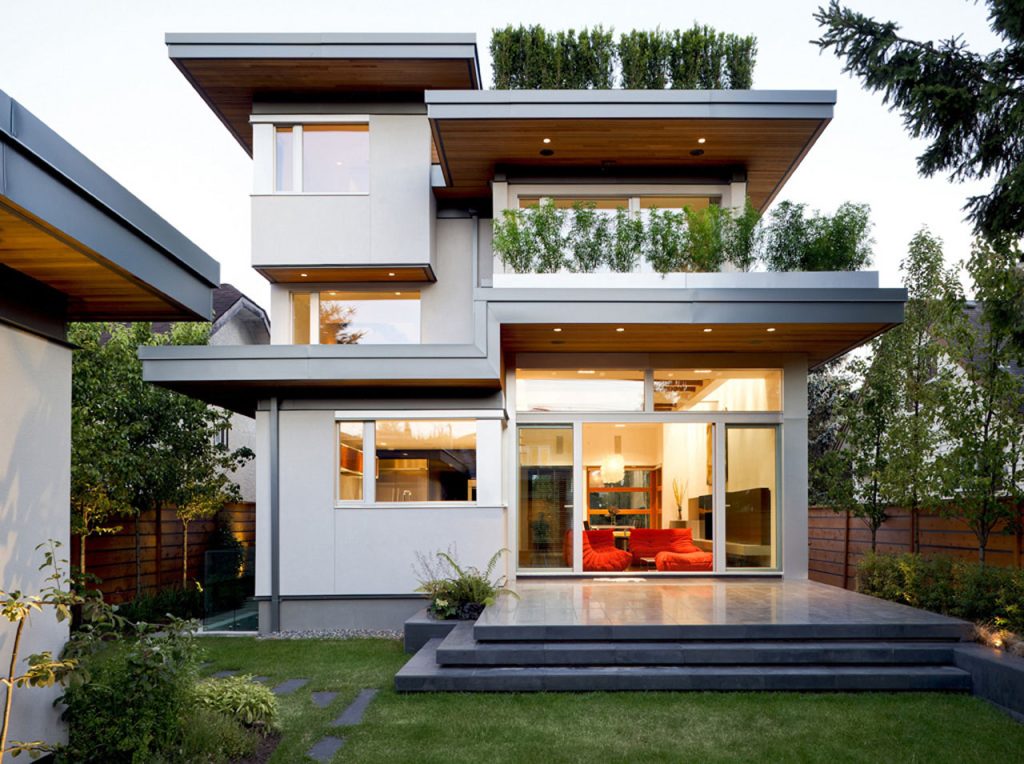
4: The Profitability of Sustainable Practices
Contrary to the misconception that sustainability entails high costs, data shows that running a sustainable practice can actually increase profits. Sustainable practices can yield financial benefits in several ways:
-
-
4.1. Energy Efficiency
-
Sustainable building designs incorporate energy-efficient features such as improved insulation, efficient HVAC systems, and energy-efficient lighting. These measures significantly reduce energy consumption, leading to lower utility bills and operational costs. A study by the U.S. Green Building Council (USGBC) reveals that green buildings can result in 27% lower energy consumption.
-
-
4.2. Reduced Maintenance and Replacement Costs
-
Sustainable building materials and furniture are often of higher quality and durability. While they may have a slightly higher upfront cost, they require less maintenance and have longer lifespans. This translates to reduced replacement and repair expenses over time. For instance, using sustainable flooring materials like bamboo or reclaimed wood can result in cost savings due to their longevity.
-
-
4.3. Improved Marketability
-
Consumers are becoming increasingly conscious of sustainability, and they are willing to pay a premium for products and services that align with their values. Sustainable practices and products can attract a larger customer base, leading to increased sales and profitability. A Nielsen study found that 66% of consumers are willing to pay more for sustainable brands.
5: Cost-Efficiency and the Lifecycle Perspective
To address the misconception that sustainable materials and practices are prohibitively expensive, it is essential to consider the entire lifecycle of a project. While some sustainable materials may have higher upfront costs, their long-term benefits outweigh these initial expenses. A life cycle assessment (LCA) takes into account the environmental impact of a product or project from raw material extraction to disposal.
When evaluating the lifecycle costs of sustainable projects, it becomes evident that they are more cost-efficient in the long run. For example, a sustainable building with energy-efficient features may have higher upfront construction costs, but the reduced operational and maintenance expenses, coupled with energy savings, result in significant cost savings over its lifetime.
6: Case Studies in Profitable Sustainability
To illustrate the profitability of sustainable practices, let’s examine just one real-world example:
Asakusa Culture and Tourist Information Center: A Sustainable Architectural Marvel by Kengo
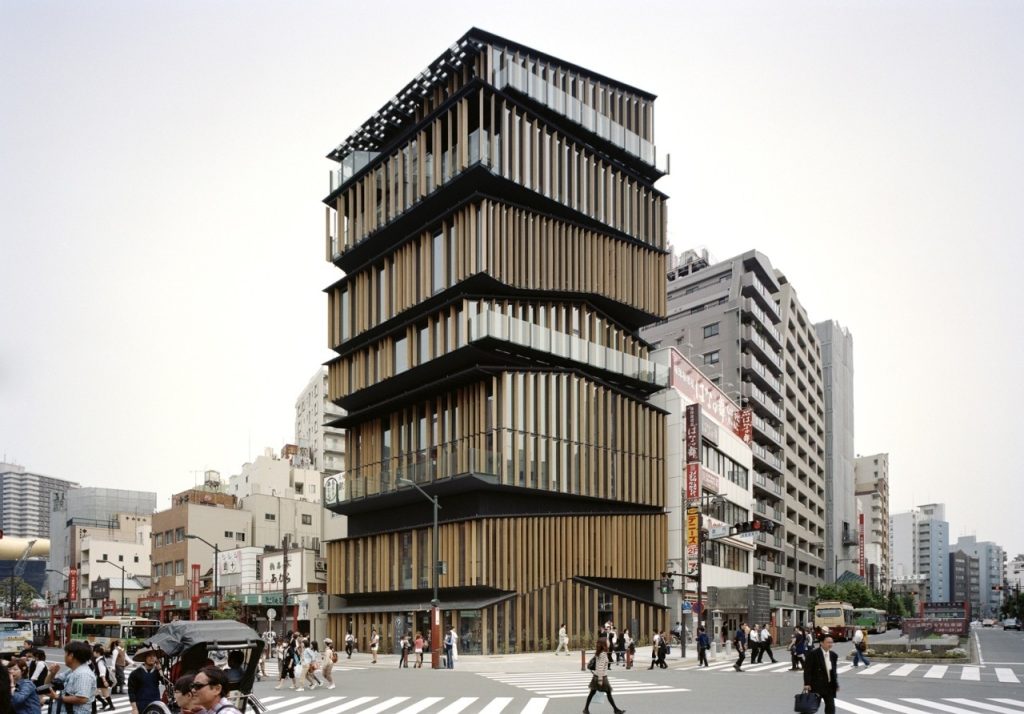
-
-
6.1. Integration with Nature
-
Kengo Kuma’s design philosophy often revolves around harmonizing buildings with their natural surroundings. The Asakusa Culture and Tourist Information Center is a striking example of this philosophy. The building features a distinct façade composed of interlocking wooden logs. These logs, made from locally sourced Japanese cedar, give the building a warm and organic appearance, seamlessly blending it into the historical district of Asakusa.
-
- 6.2 Sustainable Materials**
-
One of the hallmarks of Kengo Kuma’s architecture is his commitment to using sustainable and locally sourced materials. In this project, he utilized Japanese cedar, a renewable resource, for the building’s façade. The use of wood not only supports the local economy but also reduces the carbon footprint associated with transporting materials over long distances.
-
- 6.3. Natural Ventilation and Lighting
-
The Asakusa Culture and Tourist Information Center incorporates natural ventilation and lighting as key sustainability features. The wooden lattice façade allows for the penetration of natural light while minimizing heat gain. Additionally, the building’s design promotes efficient airflow, reducing the need for mechanical ventilation. This approach significantly lowers energy consumption for lighting and climate control.
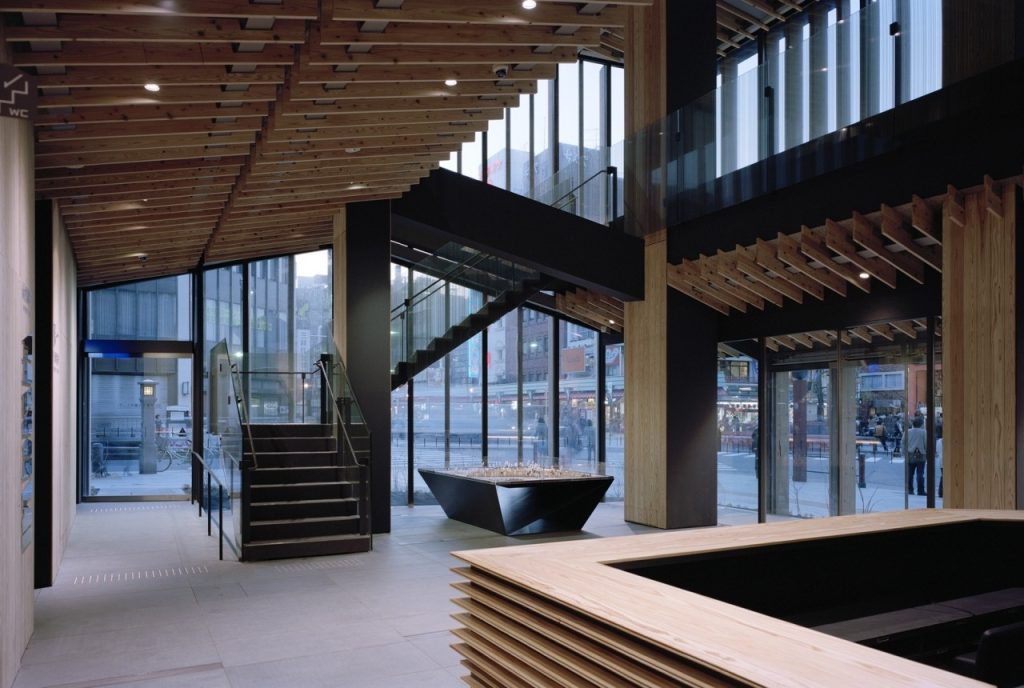
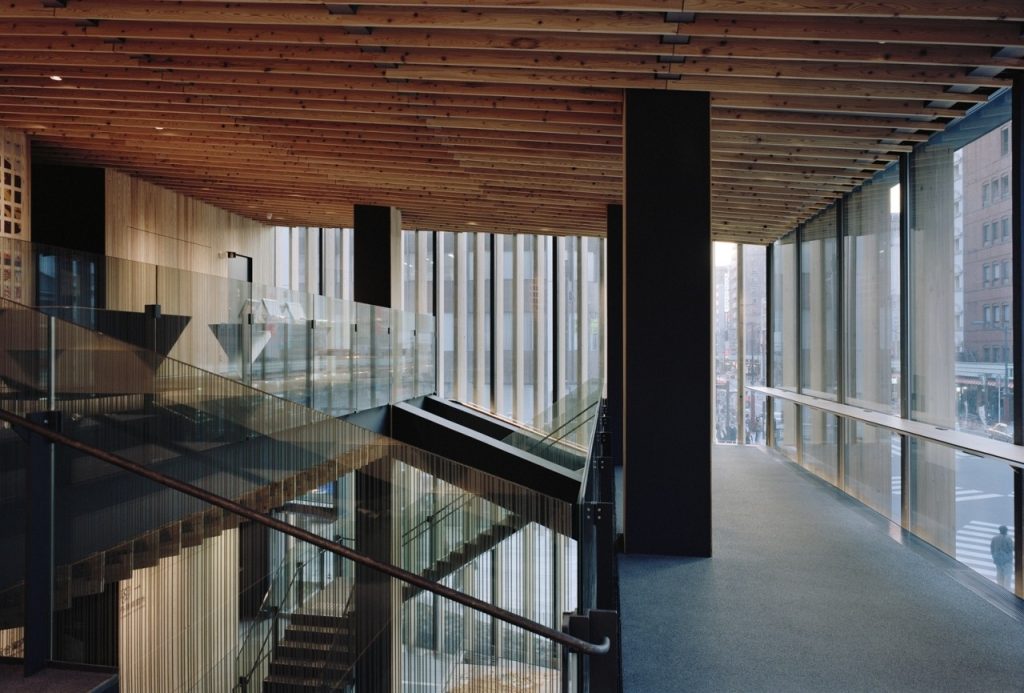
-
-
6.4. Adaptive Reuse
-
Kengo Kuma’s design philosophy often prioritizes adaptive reuse to reduce waste and preserve cultural heritage. In the case of this project, the building occupies a small footprint in a historic area of Tokyo. By designing a slender and vertical structure, Kuma maximized the use of limited space while respecting the scale and character of the neighborhood.
-
-
6.5. Cultural Sensitivity
-
Kuma’s deep respect for local culture is evident in the Asakusa Culture and Tourist Information Center. The building houses a tourist information center on its lower floors and a café on the upper levels. The café offers panoramic views of the iconic Senso-ji Temple and the Asakusa district. By incorporating these functions, Kuma not only serves the practical needs of tourists but also celebrates the cultural richness of the area.
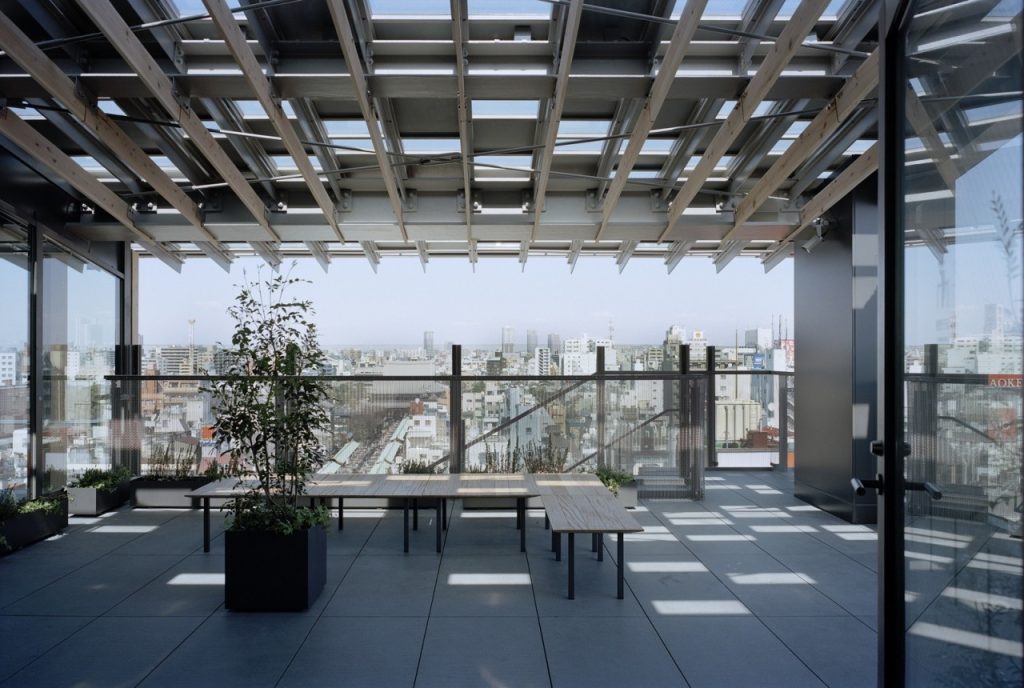
-
-
6.6. User-Centric Design
-
Kengo Kuma’s designs prioritize the comfort and well-being of users. In this building, visitors can enjoy a sense of connection with nature, thanks to the wooden lattice façade that filters natural light and creates a calming, inviting atmosphere. The inclusion of outdoor terraces and seating areas enhances the user experience and encourages interaction with the environment.
On the whole the Asakusa Culture and Tourist Information Center by Kengo Kuma is a testament to sustainable architecture that seamlessly integrates with its surroundings while respecting local culture and heritage. Kuma’s use of sustainable materials, commitment to natural ventilation and lighting, and his focus on user-centric design all contribute to the project’s overall sustainability and Biophilic design principles. This building stands as an inspiring example
But at what cost you may be asking yourself, I can’t believe it was cheap… sure it was not cheap but taking a broader look at the costs , probably not that bad either.
6.a Economic Impact and Sustainability
Although we do not have detailed access to the costs of this project we will be making some rather logical assumptions.
-
-
6.a.1. Initial Costs of Sustainable Features
-
One of the key challenges in creating a biophilic and sustainable building like the Asakusa Culture and Tourist Information Center is the initial investment required for sustainable features and materials. Some of the more expensive elements of this project might have included:
**High-Quality Wood:** The use of Japanese cedar, a sustainable and locally sourced wood, is commendable but may have initially cost more than conventional building materials.
**Advanced Design and Engineering:** Incorporating natural ventilation and lighting, as well as the intricate wooden lattice façade, could have required advanced design and engineering solutions, adding to the project’s costs.
**Cultural Sensitivity:** Designing the building to respect and integrate with the local culture and heritage might have involved additional expenses in terms of research, architectural detailing, and materials selection.
-
-
6.a.2. Economic Counterbalance:
-
Despite the potential initial expenses, the Asakusa Culture and Tourist Information Center demonstrates how economic sustainability can be achieved through various elements:
**Energy Efficiency:** The building’s sustainable design features, including natural ventilation and lighting, contribute to reduced energy consumption. Over time, lower energy bills and operational costs offset the initial investment in sustainable features.
**Adaptive Reuse:** By designing a slender and vertical structure that maximizes the limited space in the historic area, Kengo Kuma effectively used the available land resource, potentially reducing land acquisition costs.
**Tourist Attraction:** The inclusion of a tourist information center and a café with panoramic views of the iconic Senso-ji Temple adds value to the property. This could result in higher foot traffic, increased patronage, and potential revenue generation from tourism-related activities ( although we could argueably categorize this as indirect revenue stream)
**Longevity of Materials:** While Japanese cedar might have been more expensive initially, its durability and resistance to decay mean that maintenance and replacement costs will likely be lower over the building’s lifecycle. This aspect can lead to cost savings in the long run.
**Market Appeal:** The sustainable and biophilic design of the building aligns with the growing consumer demand for eco-friendly and culturally sensitive spaces, so infact we are responding to a, not so sub-concious, market demand). This can make the property more attractive to tenants, tourists, and visitors, potentially increasing its long-term economic viability.
**Community Engagement:** The building’s design not only serves its immediate functions but also engages the community by celebrating the local culture. This community involvement can foster goodwill and support for the project, potentially leading to partnerships or sponsorships that offset costs.
The economic sustainability of the Asakusa Culture and Tourist Information Center is a testament to how innovative sustainable and biophilic design can balance initial costs with long-term benefits. While certain elements of the project may have incurred higher expenses, the building’s energy efficiency, adaptability, cultural appeal, and potential revenue streams counterbalance these costs over time. It serves as a compelling example of how sustainable architecture and interior design can not only contribute to environmental and cultural sustainability but also be economically viable for developers in the long run.
7: Conclusion
In conclusion, running a sustainable business and practice in the home environment is not just an ethical choice; it’s a financially sound decision. Statistics reveal that we spend the majority of our lives indoors, underscoring the importance of creating healthy and sustainable living spaces. Biophilic design offers a scientifically proven way to enhance well-being, while the undeniable urgency of addressing climate change makes sustainability and regenerative models an inescapable imperative.
Moreover, sustainable practices can be highly profitable. Energy-efficient designs, reduced maintenance costs, and increased marketability all contribute to higher profits. When considering the entire lifecycle of a project, sustainable materials and practices often prove to be more cost-effective in the long run.
In a world where sustainability is no longer a choice but a necessity, it’s time for businesses to recognize that doing good and doing well are intrinsically linked, and the path to profitability leads through sustainability.
